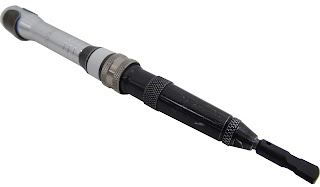This is an assignment that Kristine sent to me, I think there are some good ideas here.
I couldn't figure out how to attach it as documents, so I pasted it here.
Jewelry 1
Project
1: Research Project and Presentation
Guidelines for written report:
! Paper needs to be three (3) pages long, plus and title page and a bibliography page (total 5
pages)
$ If pictures or
illustrations are included, they do not count as part of the three
pages. It would be better to include them in the oral report visuals.
! Paper must be typed in the following
format:
$ 12 pt. font, Times New
Roman
$ .75 margins
$ double-spaced
! There must be a minimum of three (3)
references, properly annotated on your bibliography page
$ One reference must be
from an actual book
$ One reference may be
from an online source, but not Wikipedia
$ The third reference may
come from a book, a periodical, or an online reference other than Wiki.
! Oral Report will be 2 minutes long. Oral Report will be taken from the
written report.
Half
(½) of the research grade will come from the oral presentation.
! A power-point presentation or other visual
aides should be used as part of the Oral Report.
! We will spend two days in the writing lab and
library gathering information and working on the reports. Any additional time needed to complete
the assignment beyond that will be up to you.
Research
Project Ideas:
Turquoise,
origins and mining
Diamond
history
Diamond
Cutting
Diamond
mining
Amber
Rubies
Properties
of gold
Gold
mining
Fabrication
of jewelry
Lost
wax casting of jewelry
Lapidary
work
Native
American jewelry
–Navajo
–Zuni
Star
Sapphires and rubies
Laboratory
grown sapphires, rubies, and diamonds
Opals
History
of Silversmithing
Silver
mining in Utah
Crown
jewels of ( a European country you choose)
Egyptian
jewelry
Celtic
jewelry
Sumerian
jewelry
Hellenistic
Jewelry
Etruscan
jewelry
Cubic
zirconia
Topaz
Garnet
Amethyst
Pearls
History
of cultured pearls
Agate
Fresh
water pearl farms
History
of Birthstones
Chinese
Jewelry
Jewelry
of Central and South America
Mexican
Silver
Victorian
Jewelry
Art
Deco Jewelry
Gemstone
shapes and cutting
Cloisonne`
Moku
Gane
Repousse`
Millefiori
Beads
Lampwork
beads
Project Due: ______________________










































